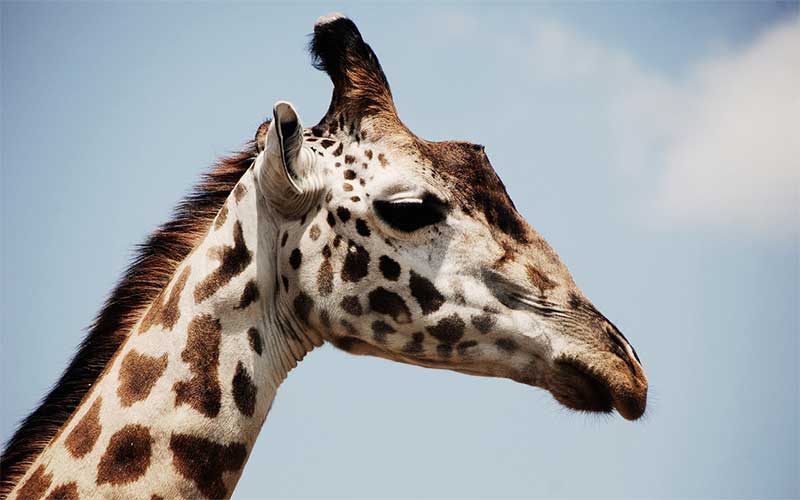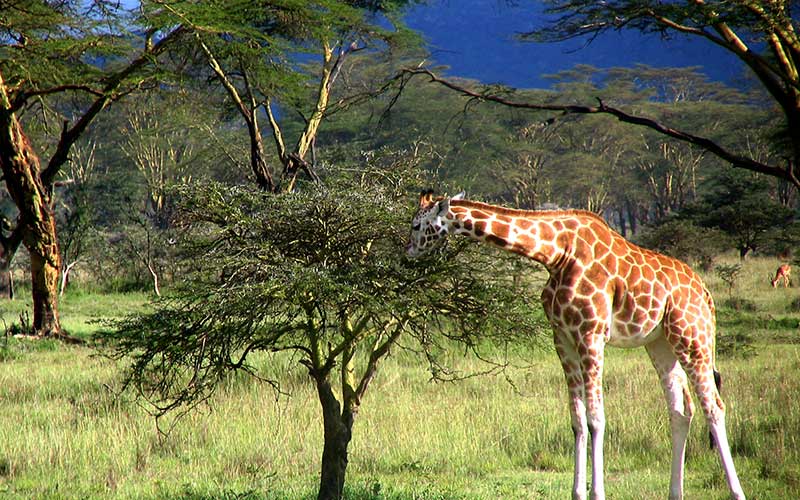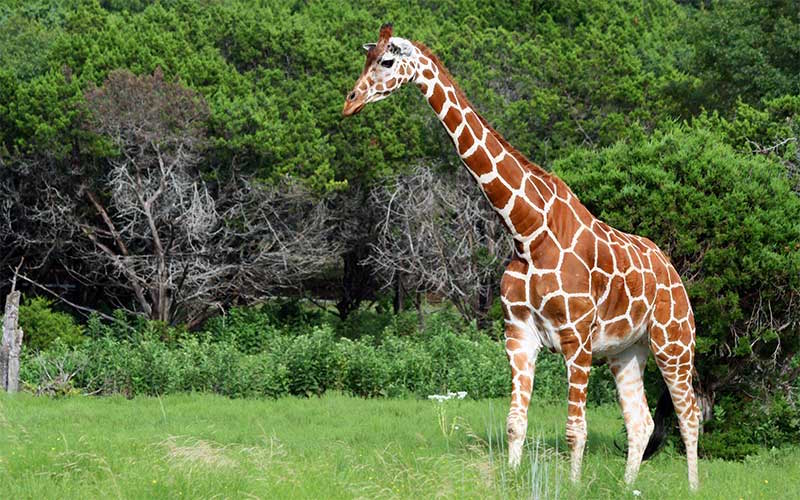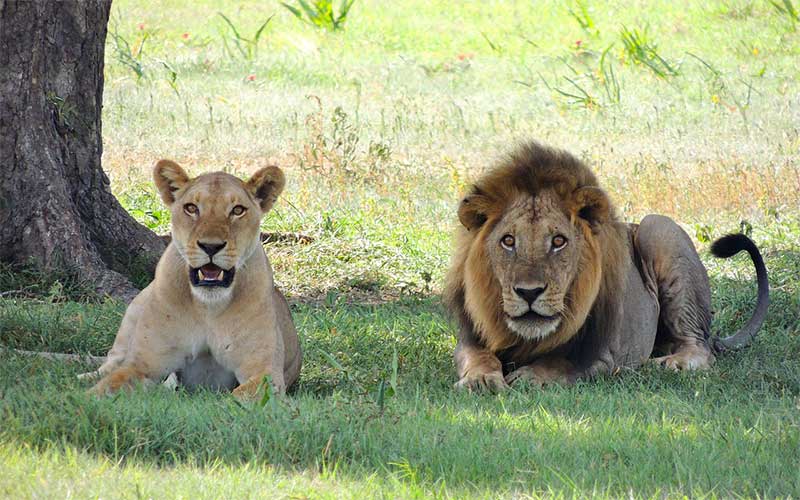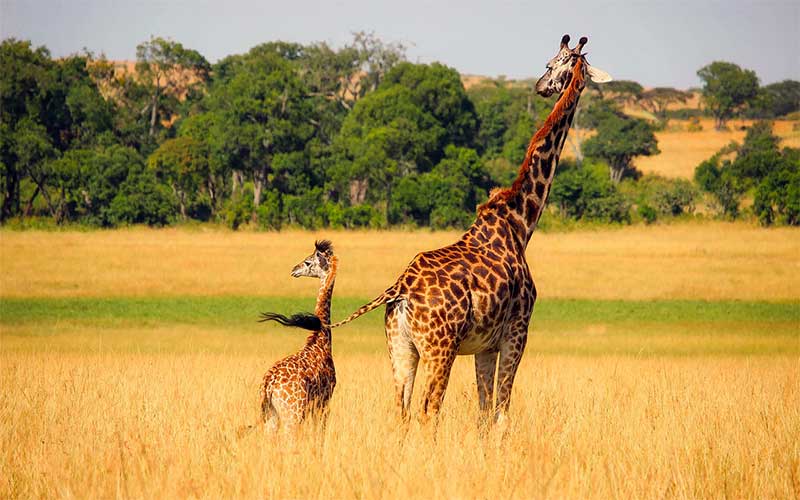Giraffe Evolution and Ancestors
The evolution that giraffes have had since their earliest ancestors to the actual specimens is fascinating. What animals share genetic code with them? Was their neck part of an evolutive process?
While the giraffe as we know it is native to Africa, more than 20-25 million years ago their ancestors also roamed along Europe and Asia. There aren’t many fossils of them, but some information has allowed scientists to come up with some evolution theories.
These ancient giraffes looked like deer and were much shorter than what we know of them today, but the scientific debate focus on how they ended up with the extremely long necks of today’s giraffes. There are a couple of theories that resume most ideas. Some believe it occurred slowly, over a long time due to the trees in the areas where they lived that trying to reach them got giraffes taller in the process.
Order Artiodactyla
They are even-toed ungulates which are those animals with hooves like deer, pigs, hippos, among others that share this peculiarity. There are three suborders within the Artiodactyla order:
Tylopoda which includes camels and llamas; Suina a suborder composed by pigs and peccaries and finally the clade Cetruminantia which includes whales, hippos, and ruminants the suborder to which giraffes belong.
Family Giraffidae
They are ruminant artiodactyls which only has two extant genera Okapia and Giraffa. Although externally they look very different, both have a genetic and morphological relationship. Both okapis and giraffes are distributed only in the African continent.
According to scientific studies, they evolved in the Miocene from ungulate animals occupying regions of Africa and Eurasia; We are talking about 25 million years ago. Eventually, they became extinct, but a new species emerged.
The long neck is a later adaptation since such ancestors had short necks and were smaller resembling more a modern okapi than an actual giraffe. Fossils of these species such as the Giraffokeryx, has short necks, horns on one side of the head and behind. By their placement has suggested the possibility that the males wrestled with lateral head movements and not with the long neck like the current giraffes.
Long neck
How did the giraffes develop such a long neck? There are two theories: one from Jean-Baptiste Lamarck and the other from Charles Darwin.
This hypothesis, known as the Lamarck Theory, was introduced in the early 1800s. It states that the food on the ground was scarce and that these animals were instinctively raising their necks as high up as they could to reach what was there. Over time, the size of those necks was longer which provide them an adaptation that allowed their survival.
The theory of the French naturalist Jean-Baptiste Lamarck is the concept of use and disuse; That is, a characteristic that is used very frequently by a living being, gradually develops and strengthens until it meets the need of the species. The parts of the body not used go missing until disappearing entirely.
On the other side, Charles Darwin had another theory about the survival of the fittest. He believed that some of the giraffes had a genetic mutation that allowed them to develop longer necks. These individuals were able to eat more, and so they were stronger. That means that those males were the ones breeding and that genetic code was passed down to the next generations. Those that couldn’t get enough to eat weren’t strong enough to mate with the females, and they eventually died without having offspring.
Darwin explains that individuals with characteristics better adapted to their environment are more likely to survive and therefore, such traits are inherited. He also said that species that can not compete and adapt eventually become extinct.
However, there is not a definitive explanation for the long necks of giraffes accepted by most scientists. Both theories, have interesting points, but they also have inconsistent and unconfirmed details.
Other scientists such as Elissa Cameron and Johan du Toit agree with the hypothesis that the necks of giraffes are long because of their continuous reach of high trees, especially because of their preference for the acacia, whose leaves are at heights that other herbivores cannot reach.
Nevertheless, researchers like Robert Simmons and Lue Scheepers disagree with this idea. They claim that regardless of whether they go through the dry season or not, giraffes feed on lower shrubs, even if there are tall trees in the same area. They observed that the females spent more time feeding with their neck in a horizontal position and that both genders ingested quantities of food at a faster rate than when they did it in a vertical position.
The hypothesis that giraffes have long neck due to the scarcity of food at low heights is not entirely accepted, so the dilemma is not fully explained yet.
Another related question is why only the giraffes developed this feature when many other animals in the zone are also herbivores? The theories and hypotheses have arisen to explain this subject, but none has the general acceptance of the scientific community.
Recently another theory appeared trying to explain this unique feature of giraffes and is related to the successful reproduction as male giraffes fight for the right to mate with a female through necking, so the bulls with the stronger necks have better chances to reproduce.
Read the article. Why do giraffes have long necks?
References
Bryan Shorrocks. The Giraffe: Biology, Ecology, Evolution and Behaviour. John Wiley & Sons, Aug 8, 2016. Page 42.
https://en.wikipedia.org/wiki/Giraffe#Evolution
Hassanin, Alexandre; Douzery, Emmanuel J. P. (2003). “Molecular and Morphological Phylogenies of Ruminantia and the Alternative Position of the Moschidae”. Systematic Biology.
Darwin, Charles (1872). Origin of Species. Sixth Edition.
Brownlee, A. (1963). “Evolution of the Giraffe,” Nature vol. 200, p. 1022.
https://www.ncbi.nlm.nih.gov/pmc/articles/PMC4873664/


